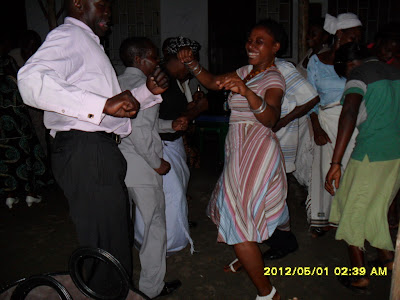_________________________________________
Origins of Tanzania Fipa People and their culture.
__________________________________________
Their ethno-linguistic group is most commonly said to have its origins in western Cameroon, although how it's possible to be so certain over migrations that date back over four millennia, I really don't know.
What is certain is that Tanzania Burunge People certainly came from the region of central Africa, from where they and/or their culture began expanding to other parts of sub-Saharan Africa around 2000 BC.
The cause of these migrations are believed to have been the result of an increasingly settled agricultural lifestyle: although needing little land (far less than herding cattle would), land had to be fertile and well-watered for cultivation to be a viable alternative.
Population pressure in central Africa may therefore have prompted the first migrations.
Several successive waves of migrations over the following millennia followed on the tracks of the first.
They were neither planned nor instantaneous, put took place gradually over hundreds and thousands of years, allowing plenty of time for these people and their culture to spread and be influenced by other cultures it came across, either through assimilation or - more rarely, it seems - conquest.
______________________________________
Traditional Music of Tanzania Fipa People
_____________________________________________
Traditionally, music was the most widely practiced art in their community. At any time of the day or night, some music was being made. Music was not made for its own sake.
Music was functional. It was used for ceremonial, religious, political, or incidental purposes.
Music was performed during funerals, to praise the departed, to console the bereaved, to keep people awake at night, to express pain and agony, and was also used during cleansing and chasing away of spirits.
Music was also played during ceremonies like beer parties ,welcoming back the warriors from a war, during a wrestling match ,during courtship, etc.
Work songs also existed. These were performed both during communal work like building, weeding, etc. and individual work like pounding of cereals, or winnowing.
Music was also used for ritual purposes like chasing away evil spirits who visit the village at night, in rain making, and during divinations and healing.
Their music was shaped by the total way of life, lifestyles, and life patterns of individuals of this community.
Because of that, the music had characteristics which distinguished it from the music of other communities.
This can be seen, heard, and felt in their melodies, rhythms, mode of presentation and dancing styles, movements, and formations.
The melodies in their music were lyrical, with a lot of vocal ornamentations. These ornaments came out clearly, especially when the music carried an important message.
Their rhythms were characterized by a lot of syncopation and acrusic beginning. These songs were usually presented in solo-response style, although some were solo performances.
The most common forms of solo performances were chants. These chants were recitatives with irregular rhythms and phrases, which carried serious messages.
Another unique characteristic in their music is the introduction of yet another chant at the middle of a musical performance.
The singing stops, the pitch of the musical instruments go down and the dance becomes less vigorous as an individual takes up the performance is self praise
________________________________________
Family life and Marriage Customs of Tanzania Fipa People.
__________________________________________
Marriage was traditionally considered to be the most significant event in the lives of both men and women.
It was thought inappropriate for anyone to remain unmarried. Large families ensured adequate numbers of workers.
The system of polygamy (multiple wives) guaranteed that all people married.
The significance of bride wealth is increasing, even among educated Africans.
Members of the groom's family initiate a process of negotiation with the bride's family that may unfold over many years.
Negotiations can be intense, and for this reason a "go-between," who is neutral to the interests of each family, is used.
Most Africans believe that divorce cannot occur after bride wealth has been exchanged and children are born.
Even if separation happens, the couple is still ideally considered to be married. Failure to have children, however, is thought to be the fault of the bride and, for this, she will be divorced or replaced by another wife.
Cattle are the primary item given in bride wealth. In determining the value of a prospective bride, her family takes into account her health, appearance, and, nowadays, her level of formal education.
Failure of men to raise a high bride wealth prompts many of them to propose elopement, a practice that is on the rise today.
Young people in East Africa still tend to marry within their own ethnic groups. Tribal elders frequently caution against "intertribal marriages."
The more distant the ethnic group in space and customs from the within, the greater the cautionary warnings.































